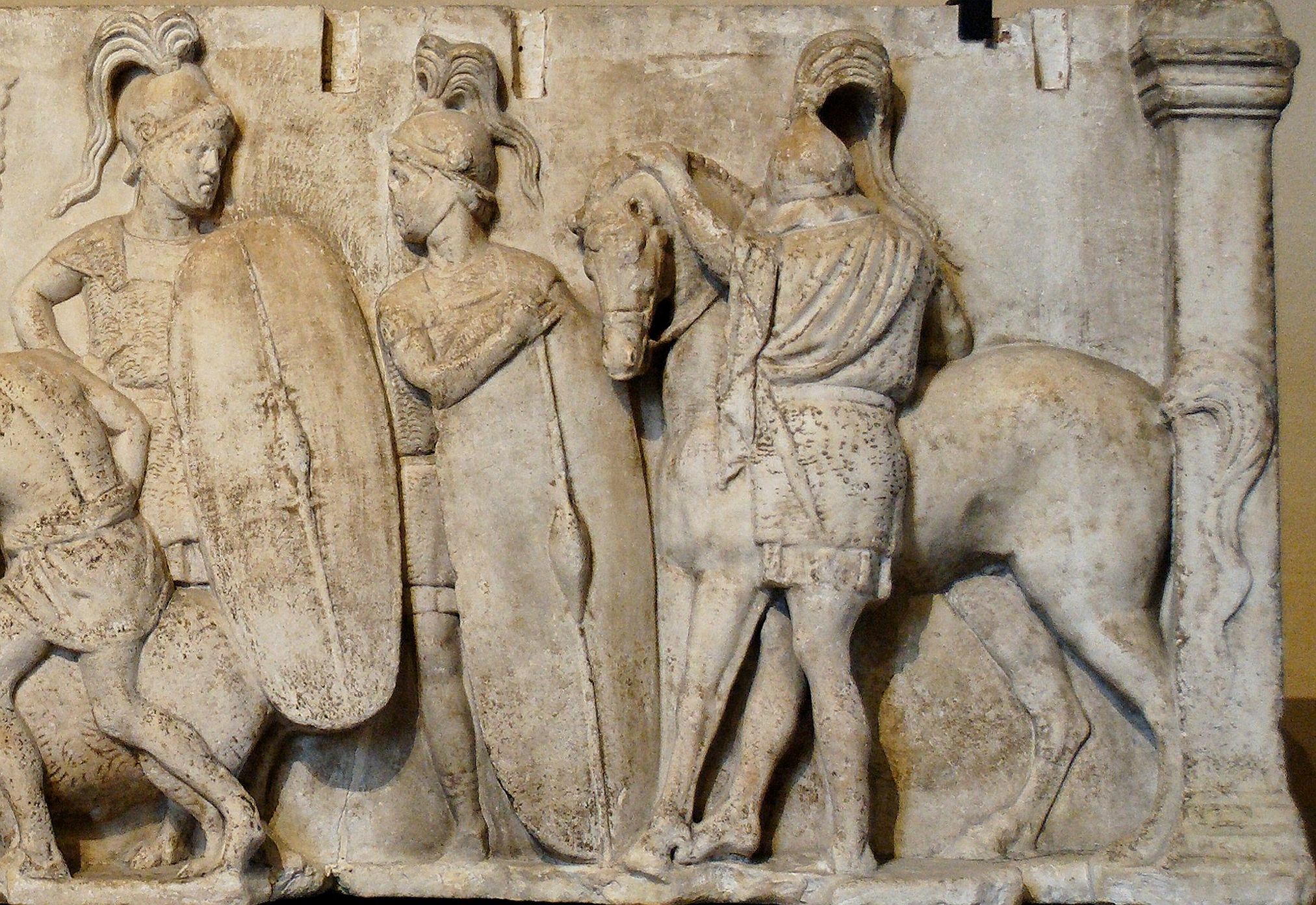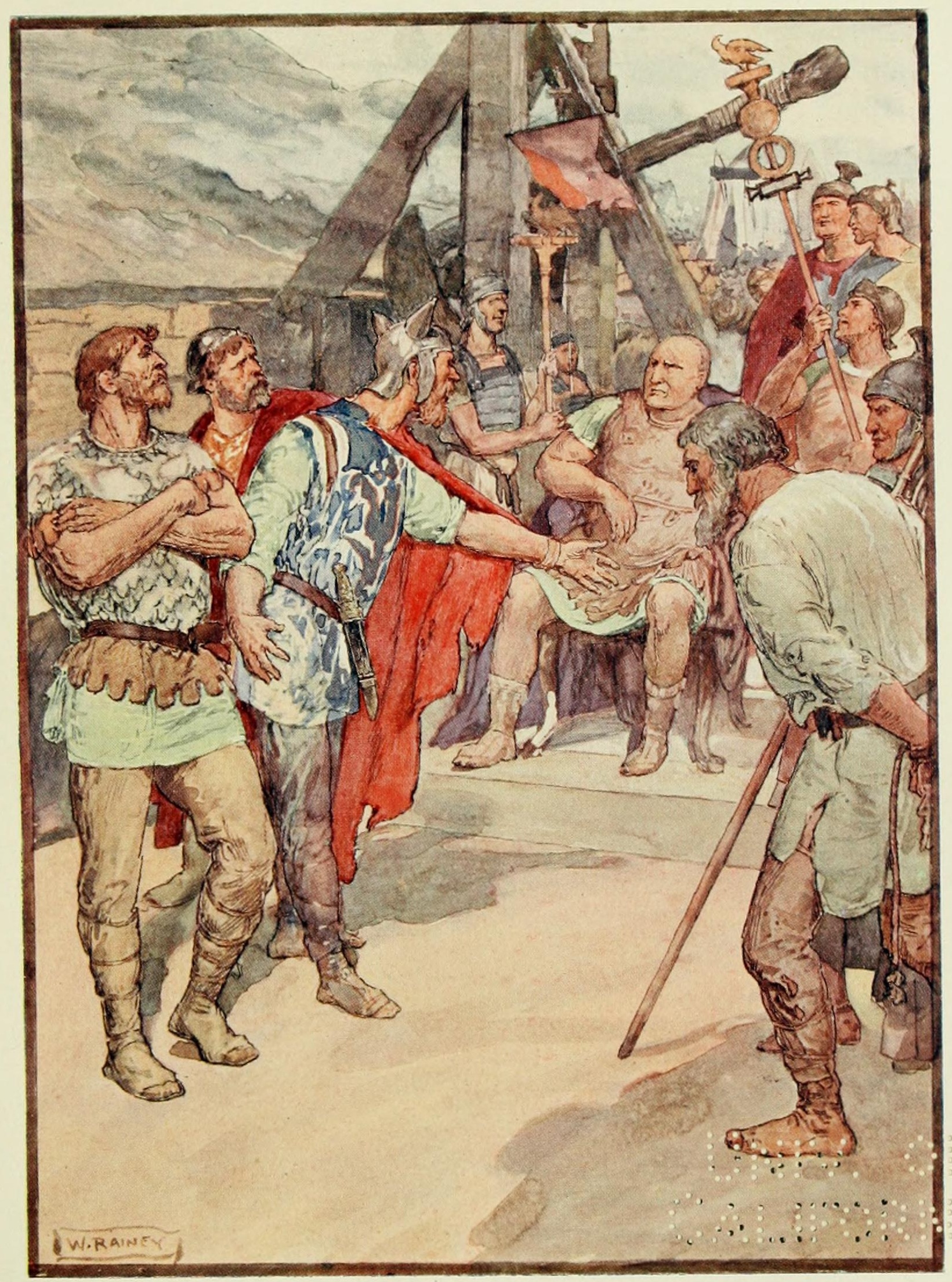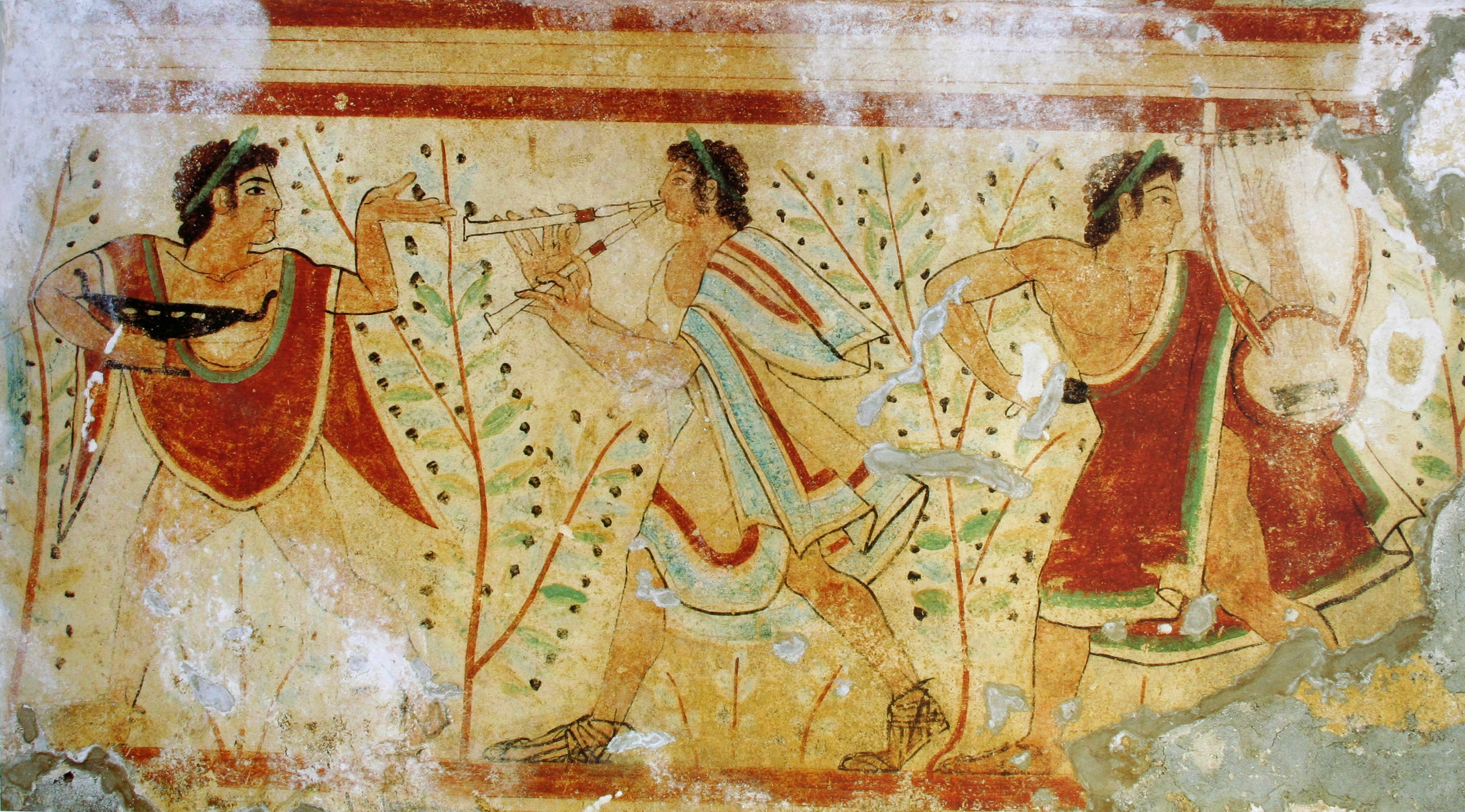|
Adsidui
In ancient Rome, ''adsidui'' (sg. ''adsiduus''; also ''assiduus'', ''assidui'', Latin for "diligent, loyal", and collectively, "taxpayers") were the citizens who were liable to military service in the main line of battle, that is, for much of the history of the Roman Republic, as legionaries. The ''adsidui'' were the members of the first five census classes, which were, according to the Roman historian Livy, created under the reign of Servius Tullius, the sixth legendary king of ancient Rome. Under Tullius' original organisation, the first class was made of the richest, and thus best-equipped citizens, with helmet, shield, greaves, cuirass, spear and sword. As one went down through the classes and the corresponding levels of wealth, equipment went lighter and lighter. According to Peter Connolly, the goal of Tullius' reform was to base military service on wealth, and not race, thus better integrating the Etruscans, who at that time ruled Rome and the Romans themselves; he points out ... [...More Info...] [...Related Items...] OR: [Wikipedia] [Google] [Baidu] |
Structural History Of The Roman Military
The structural history of the Roman military concerns the major transformations in the organization and constitution of ancient Rome's armed forces, "the most effective and long-lived military institution known to history."''Encyclopædia Britannica'', Eleventh Edition (1911), ''The Roman Army'' From its origins around 800 BC to its final dissolution in AD 476 with the demise of the Western Roman Empire, Rome's military organization underwent substantial structural change. At the highest level of structure, the forces were split into the Roman army and the Roman navy, although these two branches were less distinct than in many modern national defense forces. Within the top levels of both army and navy, structural changes occurred as a result of both positive military reform and organic structural evolution. These changes can be divided into four distinct phases. ;Phase I: The army was derived from obligatory annual military service levied on the citizenry, as part of th ... [...More Info...] [...Related Items...] OR: [Wikipedia] [Google] [Baidu] |
Proletariat
The proletariat (; ) is the social class of wage-earners, those members of a society whose only possession of significant economic value is their labour power (their capacity to work). A member of such a class is a proletarian. Marxist philosophy considers the proletariat to be exploited under capitalism, forced to accept meager wages in return for operating the means of production, which belong to the class of business owners, the bourgeoisie. Marx argued that this oppression gives the proletariat common economic and political interests that transcend national boundaries, impelling them to unite and take over power from the capitalist class, and eventually to create a communist society free from class distinctions. Roman Republic and Empire The constituted a social class of Roman citizens who owned little or no property. The name presumably originated with the census, which Roman authorities conducted every five years to produce a register of citizens and their p ... [...More Info...] [...Related Items...] OR: [Wikipedia] [Google] [Baidu] |
Marian Reforms
The Marian reforms were reforms of the ancient Roman army implemented in 107 BC by the statesman Gaius Marius, for whom they were later named. The reforms originated as a reaction to the military and logistical stagnation of the Roman Republic in the late 2nd century BC. Centuries of military campaigning throughout the Mediterranean and increasing invasions and uprisings across Roman territory had stretched the human and physical resources of the Roman army. Marius proposed radical alterations with the intention of creating a more professional, permanent, and dynamic Roman army. The reforms revolutionized the Roman military machine, introducing the standardized legionary, the cohort unit and drastically altering the property and weaponry requirements for recruitment. The reforms also put the responsibility of supplying and managing an army in the hands of the general. Marius also granted citizenship and land to all Roman soldiers. The consequences of these reforms had a significan ... [...More Info...] [...Related Items...] OR: [Wikipedia] [Google] [Baidu] |
Ancient Rome
In modern historiography, ancient Rome refers to Roman civilisation from the founding of the city of Rome in the 8th century BC to the collapse of the Western Roman Empire in the 5th century AD. It encompasses the Roman Kingdom (753–509 BC), Roman Republic (509–27 BC) and Roman Empire (27 BC–476 AD) until the fall of the western empire. Ancient Rome began as an Italic settlement, traditionally dated to 753 BC, beside the River Tiber in the Italian Peninsula. The settlement grew into the city and polity of Rome, and came to control its neighbours through a combination of treaties and military strength. It eventually dominated the Italian Peninsula, assimilated the Greek culture of southern Italy ( Magna Grecia) and the Etruscan culture and acquired an Empire that took in much of Europe and the lands and peoples surrounding the Mediterranean Sea. It was among the largest empires in the ancient world, with an estimated 50 to 90 million inhabitants, roughly 20% of t ... [...More Info...] [...Related Items...] OR: [Wikipedia] [Google] [Baidu] |
Sword
A sword is an edged, bladed weapon intended for manual cutting or thrusting. Its blade, longer than a knife or dagger, is attached to a hilt and can be straight or curved. A thrusting sword tends to have a straighter blade with a pointed tip. A slashing sword is more likely to be curved and to have a sharpened cutting edge on one or both sides of the blade. Many swords are designed for both thrusting and slashing. The precise definition of a sword varies by historical epoch and geographic region. Historically, the sword developed in the Bronze Age, evolving from the dagger; the earliest specimens date to about 1600 BC. The later Iron Age sword remained fairly short and without a crossguard. The spatha, as it developed in the Late Roman army, became the predecessor of the European sword of the Middle Ages, at first adopted as the Migration Period sword, and only in the High Middle Ages, developed into the classical arming sword with crossguard. The word '' sword'' continue ... [...More Info...] [...Related Items...] OR: [Wikipedia] [Google] [Baidu] |
Roman Citizen
Citizenship in ancient Rome (Latin: ''civitas'') was a privileged political and legal status afforded to free individuals with respect to laws, property, and governance. Citizenship in Ancient Rome was complex and based upon many different laws, traditions, and cultural practices. There existed several different types of citizenship, determined by one's gender, class, and political affiliations, and the exact duties or expectations of a citizen varied throughout the history of the Roman Empire. History The oldest document currently available that details the rights of citizenship is the Twelve Tables, ratified c. 449 BC. Much of the text of the Tables only exists in fragments, but during the time of Ancient Rome the Tables would be displayed in full in the Roman Forum for all to see. The Tables detail the rights of citizens in dealing with court proceedings, property, inheritance, death, and (in the case of women) public behavior. Under the Roman Republic, the government conducte ... [...More Info...] [...Related Items...] OR: [Wikipedia] [Google] [Baidu] |
Capite Censi
''Capite censi'' were literally, in Latin, "those counted by head" in the ancient Roman census. Also known as "the head count", the term was used to refer to the lowest class of citizens, people not of the nobility or middle classes, owning little or no property; thus they were counted by the head rather than by their property. Initially ''capite censi'' was synonymous with '' proletarii'', meaning those citizens whose property was too small to be rated for the census. Later though, the ''proletarii'' were distinguished from the ''capite censi'' as having "appreciable property" to the value of 11,000 asses or less. In contrast, the ''capite censi'' are assumed to have not owned any property of significance. Gaius Marius, as part of the Marian reforms of 107 BC, allowed these non-land-owning Romans to enlist in the Roman legions. For the first time, men no longer had to own property to fight for Rome. Because these men had no property, they became the clients of their generals and ... [...More Info...] [...Related Items...] OR: [Wikipedia] [Google] [Baidu] |
Gaius Marius
Gaius Marius (; – 13 January 86 BC) was a Roman general and statesman. Victor of the Cimbric and Jugurthine wars, he held the office of consul an unprecedented seven times during his career. He was also noted for his important reforms of Roman armies. He set the precedent for the shift from the militia levies of the middle Republic to the professional soldiery of the late Republic; he also improved the '' pilum'', a javelin, and made large-scale changes to the logistical structure of the Roman army. Rising from a well-off provincial Italian family in Arpinum, Marius acquired his initial military experience serving with Scipio Aemilianus at the Siege of Numantia in 134 BC. He won election as tribune of the plebs in 119 BC and passed a law limiting aristocratic interference in elections. Barely elected praetor in 115 BC, he next became the governor of Further Spain where he campaigned against bandits. On his return from Spain he married Julia, the aunt of J ... [...More Info...] [...Related Items...] OR: [Wikipedia] [Google] [Baidu] |
Censor (ancient Rome)
The censor (at any time, there were two) was a magistrate in ancient Rome who was responsible for maintaining the census, supervising public morality, and overseeing certain aspects of the government's finances. The power of the censor was absolute: no magistrate could oppose his decisions, and only another censor who succeeded him could cancel those decisions. The censor's regulation of public morality is the origin of the modern meaning of the words ''censor'' and ''censorship''. Early history of the magistracy The ''census'' was first instituted by Servius Tullius, sixth king of Rome, BC. After the abolition of the monarchy and the founding of the Republic in 509 BC, the consuls had responsibility for the census until 443 BC. In 442 BC, no consuls were elected, but tribunes with consular power were appointed instead. This was a move by the plebeians to try to attain higher magistracies: only patricians could be elected consuls, while some military tribunes were plebeians. ... [...More Info...] [...Related Items...] OR: [Wikipedia] [Google] [Baidu] |
Roman Kingdom
The Roman Kingdom (also referred to as the Roman monarchy, or the regal period of ancient Rome) was the earliest period of Roman history when the city and its territory were ruled by kings. According to oral accounts, the Roman Kingdom began with the city's founding 753 BC, with settlements around the Palatine Hill along the river Tiber in central Italy, and ended with the overthrow of the kings and the establishment of the Republic 509 BC. Little is certain about the kingdom's history as no records and few inscriptions from the time of the kings survive. The accounts of this period written during the Republic and the Empire are thought largely to be based on oral tradition. Origin The site of the founding of the Roman Kingdom (and eventual Republic and Empire) had a ford where one could cross the river Tiber in central Italy. The Palatine Hill and hills surrounding it provided easily defensible positions in the wide fertile plain surrounding them. Each of these features c ... [...More Info...] [...Related Items...] OR: [Wikipedia] [Google] [Baidu] |
Ancient Rome
In modern historiography, ancient Rome refers to Roman civilisation from the founding of the city of Rome in the 8th century BC to the collapse of the Western Roman Empire in the 5th century AD. It encompasses the Roman Kingdom (753–509 BC), Roman Republic (509–27 BC) and Roman Empire (27 BC–476 AD) until the fall of the western empire. Ancient Rome began as an Italic settlement, traditionally dated to 753 BC, beside the River Tiber in the Italian Peninsula. The settlement grew into the city and polity of Rome, and came to control its neighbours through a combination of treaties and military strength. It eventually dominated the Italian Peninsula, assimilated the Greek culture of southern Italy ( Magna Grecia) and the Etruscan culture and acquired an Empire that took in much of Europe and the lands and peoples surrounding the Mediterranean Sea. It was among the largest empires in the ancient world, with an estimated 50 to 90 million inhabitants, roughly 20% of t ... [...More Info...] [...Related Items...] OR: [Wikipedia] [Google] [Baidu] |
Etruscan Civilization
The Etruscan civilization () was developed by a people of Etruria in ancient Italy with a common language and culture who formed a federation of city-states. After conquering adjacent lands, its territory covered, at its greatest extent, roughly what is now Tuscany, western Umbria, and northern Lazio, as well as what are now the Po Valley, Emilia-Romagna, south-eastern Lombardy, southern Veneto, and western Campania. The earliest evidence of a culture that is identifiably Etruscan dates from about 900BC. This is the period of the Iron Age Villanovan culture, considered to be the earliest phase of Etruscan civilization, which itself developed from the previous late Bronze Age Proto-Villanovan culture in the same region. Etruscan civilization endured until it was assimilated into Roman society. Assimilation began in the late 4thcenturyBC as a result of the Roman–Etruscan Wars; it accelerated with the grant of Roman citizenship in 90 BC, and became complete in 27 BC, when the Etr ... [...More Info...] [...Related Items...] OR: [Wikipedia] [Google] [Baidu] |









